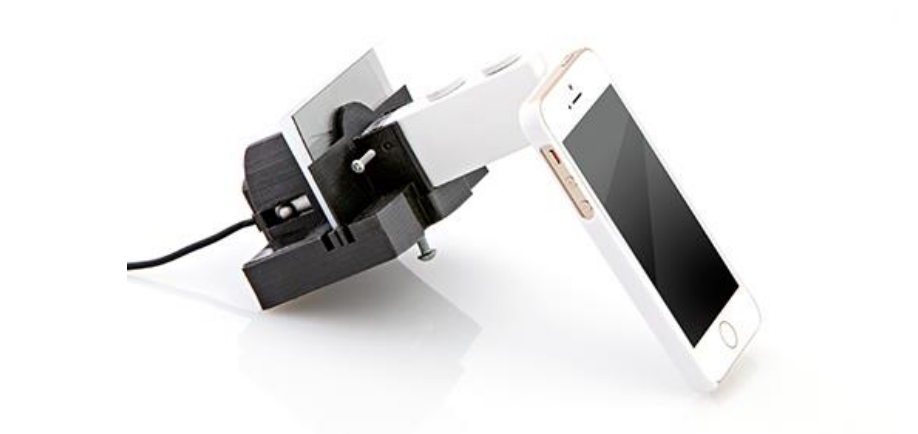In ‘3D-Printed Microscope Accessory: Affordable Technology for Efficient Diagnostics,’ Nicholas Addy-Tayie explores the use of progressive techniques to create better microscopy in malaria diagnostics. Malaria can be deadly, especially for those who are heavily exposed to the bites of mosquitoes infected with P. falciparum, according to the Centers for Disease Control and Prevention (CDC). As the author points out, the life-threatening disease is more common in Sub-Saharan countries and Asia, with children being more vulnerable.
Statistics from Addy-Tayie’s paper indicate that there were 445,000 deaths from malaria in 2015 (World Health Organization data). And although the US has invested significant amounts to see the disease eliminated, WHO reports that ‘damning statistics’ have not been well received around the world.
“There are two main practices currently involved with malaria diagnostics, namely; the standard microscope test and Rapid Diagnostics Test otherwise called RDT. Whereas the standard microscope is the most preferred choice for diagnostics; because of the detailed results it provides, which then influences the effectiveness and efficiency of treatment; the microscope facility requires some level of cost to acquire. This cost involvement has influenced the low availability of the microscope in developing countries and communities,” states Addy-Tayie.
The author goes on to point out it is critical today to create more efficient ways to study the disease—and this begins with the microscope. For his thesis in Materials Processing Technology at Arcada, Tayie outlines the concept, along with research, design, and testing of a microscope accessory for imaging from a smartphone. Research methodology included interviews with healthcare workers, mainly meant to discern whether they were using RDT kits or microscopy kits for diagnosis.
“Apparently, data gathering in the institutions in Ghana is not very common,” states the author.
“The general assumption with all the interviewees was that there is a very high possibility that it is either the falciparum parasite causing the prevailing symptoms of malaria or the symptoms cannot be attributed to malaria infection. In other words, the other malaria causing parasites like vivax and others are not common in the country.”
Microscopy (via a light microscope) was found to be the most common type of diagnostic tool, although the equipment is admittedly difficult to come by. Addy-Tayie realized that accessories for microscopy could be created using all the classic benefits of 3D printing, reducing the amount of man-power needed and eliminating the need to order parts from a factory or go through a middleman.
And although it may be ironic that healthcare tools and accessibility to medical treatment may be sparse while smartphones are owned by the millions, this opens a portal to diagnostics, via microscopy adapters. There may be other options available, but none seem to fit the bill better than the mobile-optical-polarization (MOPID) imaging device as it can take advantage of a simple smartphone camera in taking high resolution images. The 3D printed fittings created for this study also work seamlessly, including:
- Light-source holder
- Diffuser
- Sample slide
- Microscope attachment
The author states that this device can help in diagnosing malaria quickly, offering microscopic resolution, ‘on par with benchtop spectroscopy’; however, there is a degree of ‘optical know-how’ recommended for use with the product in terms of focusing and zooming.
“The project was designed and implemented based on the available lenses, and thus the resultant magnification. The microscopy objectives concept which formed the basis for the design concept involved with Project Design 2 allows for addition of extra tube lenses to enhance magnification,” concluded the author.
“Therefore, further improvements could be made in the future to achieve even higher magnification and resolution. However, WHO recommends 1000X magnification for efficient malaria diagnosis. And the least size of malaria parasite is around 0.001 mm; but the unaided eye can see a 0.1 mm object. Therefore, achieving about 140X magnification; for a 0.14 instead of the recommended 1.0 mm is appreciable.”
3D printing is transforming the medical realm in numerous ways, and often in diagnostics. For common diseases like malaria, research groups have not only 3D printed devices for detecting the condition in outlying areas, they have created a variety of different aids in studying the disease, along with others like filtration devices which may offer better treatment.
What do you think of this news? Let us know your thoughts! Join the discussion of this and other 3D printing topics at 3DPrintBoard.com
[Source / Images: 3D-Printed Microscope Accessory: Affordable Technology for Efficient Diagnostics]Subscribe to Our Email Newsletter
Stay up-to-date on all the latest news from the 3D printing industry and receive information and offers from third party vendors.
You May Also Like
3D Printing Unpeeled: New Arkema Material for HP, Saddle and Macro MEMS
A new Arkema material for MJF is said to reduce costs per part by up to 25% and have an 85% reusability ratio. HP 3D HR PA 12 S has been...
3D Printing News Briefs, January 20, 2024: FDM, LPBF, Underwater 3D Printer, Racing, & More
We’re starting off with a process certification in today’s 3D Printing News Briefs, and then moving on to research about solute trapping, laser powder bed fusion, and then moving on...
3D Printing Webinar and Event Roundup: December 3, 2023
We’ve got plenty of events and webinars coming up for you this week! Quickparts is having a Manufacturing Roadshow, America Makes is holding a Member Town Hall, Stratafest makes two...
Formnext 2023 Day Three: Slam Dunk
I’m high—high on trade show. I’ve met numerous new faces and reconnected with old friends, creating an absolutely wonderful atmosphere. The excitement is palpable over several emerging developments. The high...



































